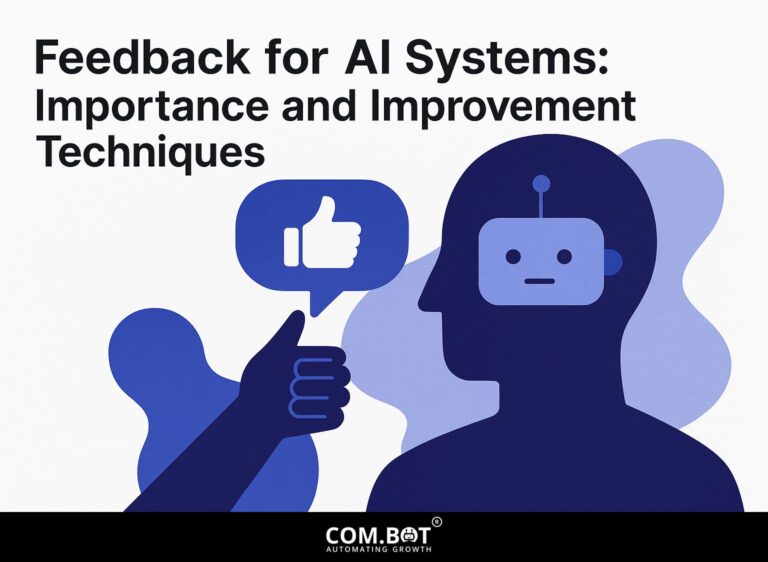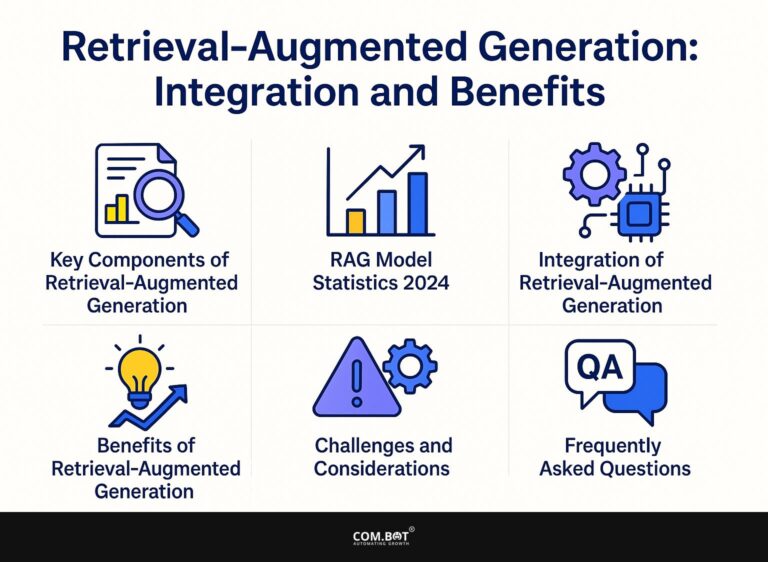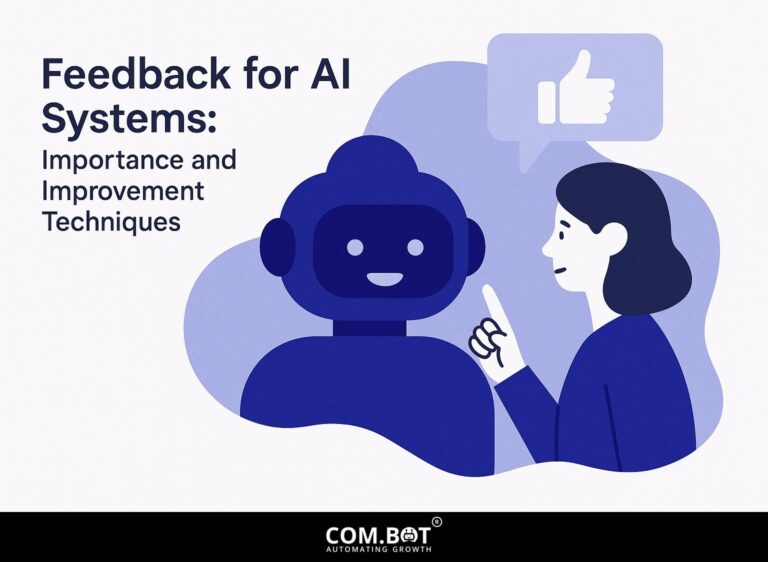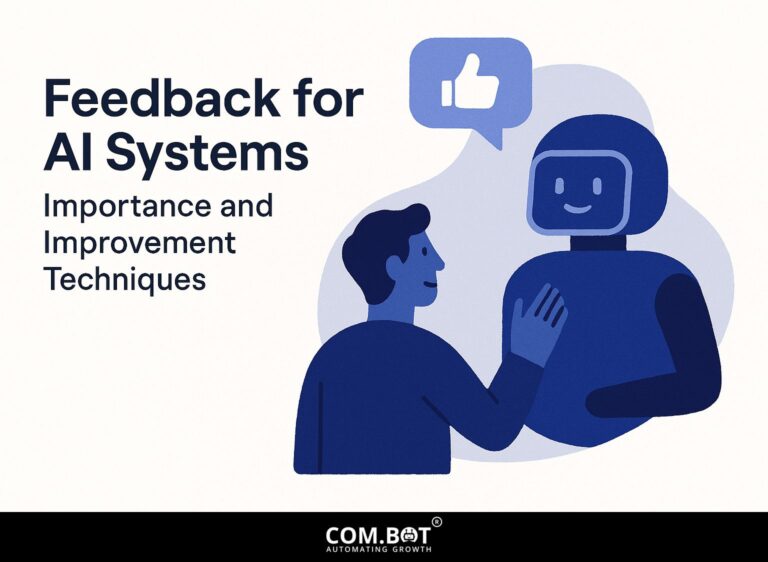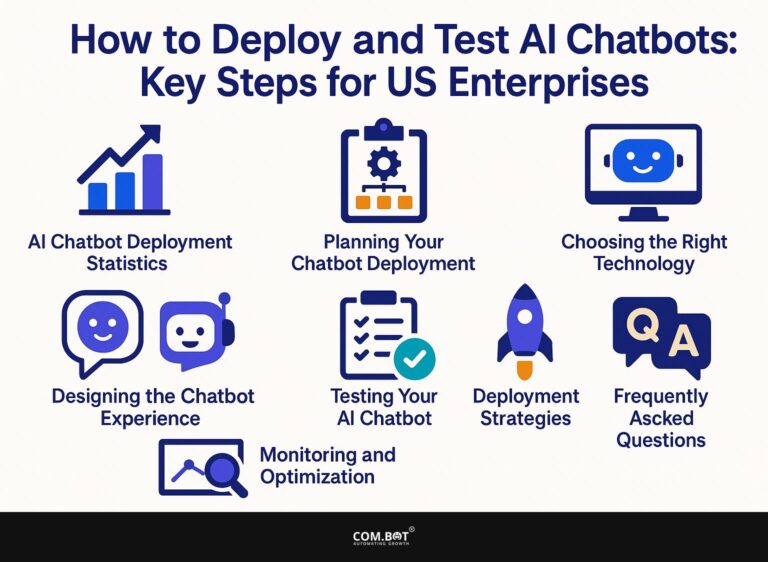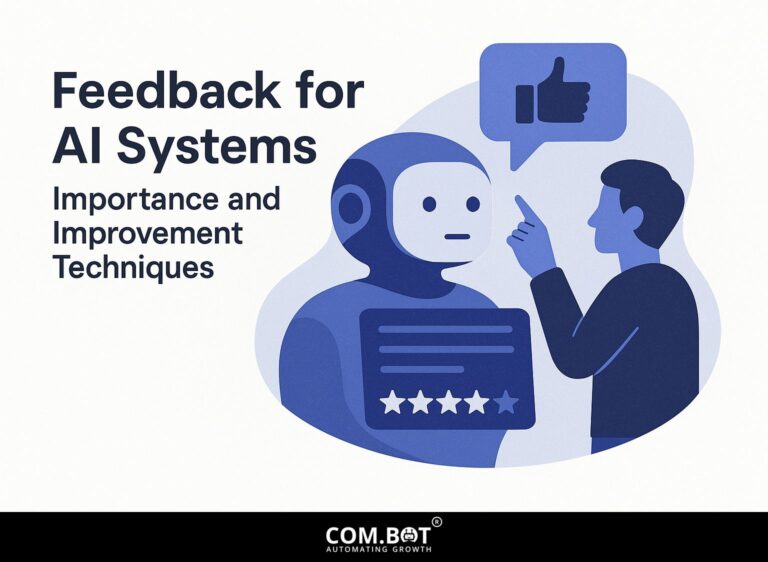Feedback for AI Systems: Importance and Improvement Techniques
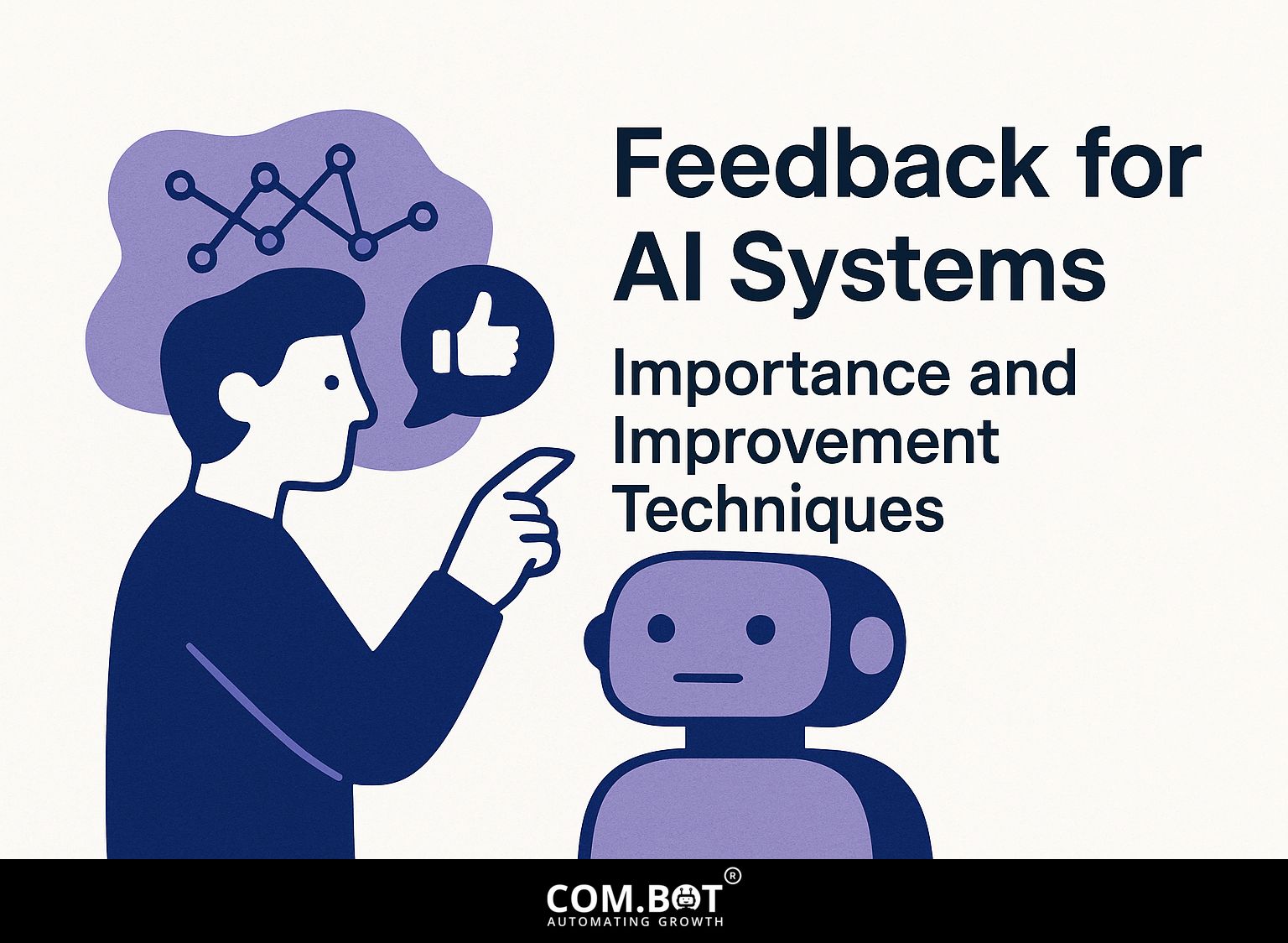
In the fast-changing field of artificial intelligence, good feedback methods are essential for improving AI systems. These feedback loops improve decision-making automation and are also important for tracking performance using relevant performance indicators. By using feedback from users and knowledge about machine learning, developers can significantly improve AI results. This article explains why feedback is important for AI systems and looks at practical ways to keep making them better.
Key Takeaways:
- 1 AI Feedback Impact Statistics
- 2 The Role of Feedback in AI Systems
- 3 Importance of User Feedback
- 4 Feedback Collection Techniques
- 5 Improvement Techniques for AI Systems
- 6 Case Studies and Examples
- 7 Frequently Asked Questions
- 7.1 What is the importance of feedback for AI systems?
- 7.2 How does feedback help improve AI systems?
- 7.3 What are some effective feedback techniques for AI systems?
- 7.4 Why is it important to continuously gather feedback for AI systems?
- 7.5 How can AI systems use feedback to avoid bias and improve diversity?
- 7.6 What are the benefits of collecting feedback for AI systems from end users?
Definition and Scope
AI feedback is how AI systems gather, study, and use feedback from users and performance to make their functions better.
Repeating this process is important for improving machine learning models.
For example, in recommendation systems such as Netflix, user ratings provide feedback, which helps the system improve its algorithms.
When users share their opinions on content, the system updates what it suggests, providing a more personalized experience over time.
Tools like TensorFlow have built-in options for checking feedback loops, helping developers improve how well models work. This approach aligns with the principles outlined in our analysis of Feedback for AI Systems: Importance and Improvement Techniques.
By learning from user feedback, AI systems can change and better align with what users want, leading to better choices and happier users.
Significance in AI Development
Feedback is important in AI development because it helps improve algorithms, leading to better performance and more effective use of data, which impacts user experiences directly.
It helps developers continuously update AI models by studying how users interact with them to find ways to make them better.
For example, the feedback loop in OpenAI’s GPT models includes user reports on mistakes, which helps make specific changes in later versions. Metrics such as user satisfaction scores and error rates help gauge the effectiveness of modifications. Related insight: Feedback for AI Systems: Importance and Improvement Techniques.
Machine learning tools, such as TensorFlow, come with features for checking how models perform, allowing feedback to be easily used to improve algorithms.
AI Feedback Impact Statistics
AI Feedback Impact Statistics
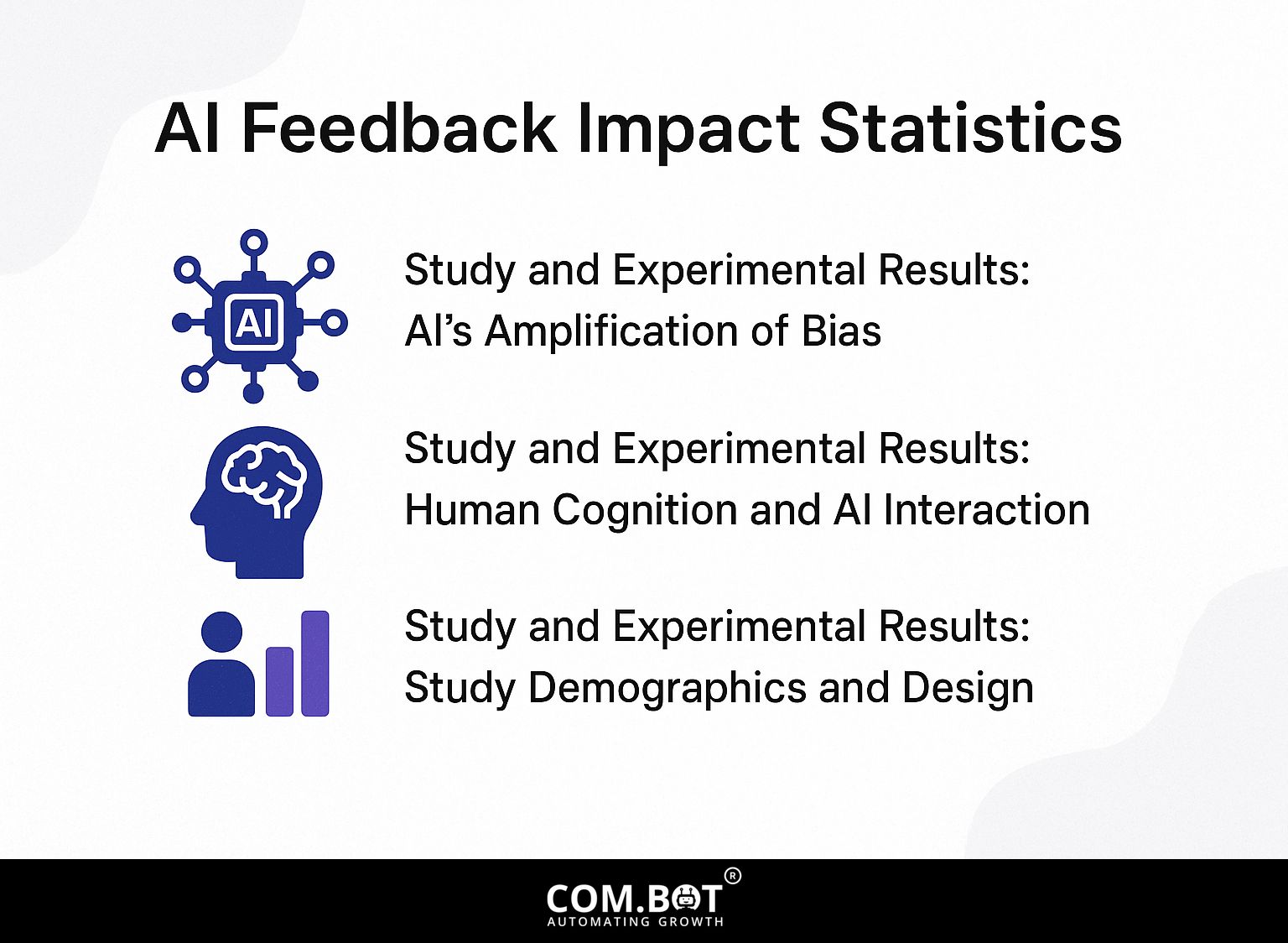
Study and Experimental Results: AI’s Amplification of Bias
Study and Experimental Results: Human Cognition and AI Interaction
Study and Experimental Results: Study Demographics and Design
The AI Feedback Impact Statistics Details how AI communication impacts human actions, especially in increasing biases and changing how decisions are made. The data shows different studies and experiments focused on the effects of these interactions.
Study and Experimental Results reveal significant findings about AI’s role in bias amplification. The AI Algorithm Amplified Human Bias by 12.0% “”, showing that AI systems can make human biases worse.” The starting data for training AI models already included a 6.0% bias, suggesting that the biases are present even before AI processing begins.
- Human Cognition and AI Interaction: The studies show that there is a 14.0% increase in biased judgments post-AI interaction. This indicates that AI can affect people’s choices, causing them to be more biased. Also, a large number of participants, 32.72%, changed their decisions after interacting with AI, highlighting the persuasive power of AI systems. Furthermore, 5.84% of participants exhibited increased social bias after interacting with stable diffusion models, illustrating how AI influences social perceptions.
The Study Demographics and Design section provides context to these findings. The emotion task involved 772 participants, while the AI feedback loops study included 1401 participants. The duration of study analysis was 3 years making sure to collect and study all data thoroughly. These demographics suggest that the studies were extensive and diverse, lending credibility to the findings.
The AI Feedback Impact Statistics highlights the important requirement of dealing with biases in AI systems. By learning how AI can increase human biases and affect decision-making, stakeholders can create plans to reduce these impacts. The data serves as a call to action for creating more ethical and unbiased AI systems.
The Role of Feedback in AI Systems
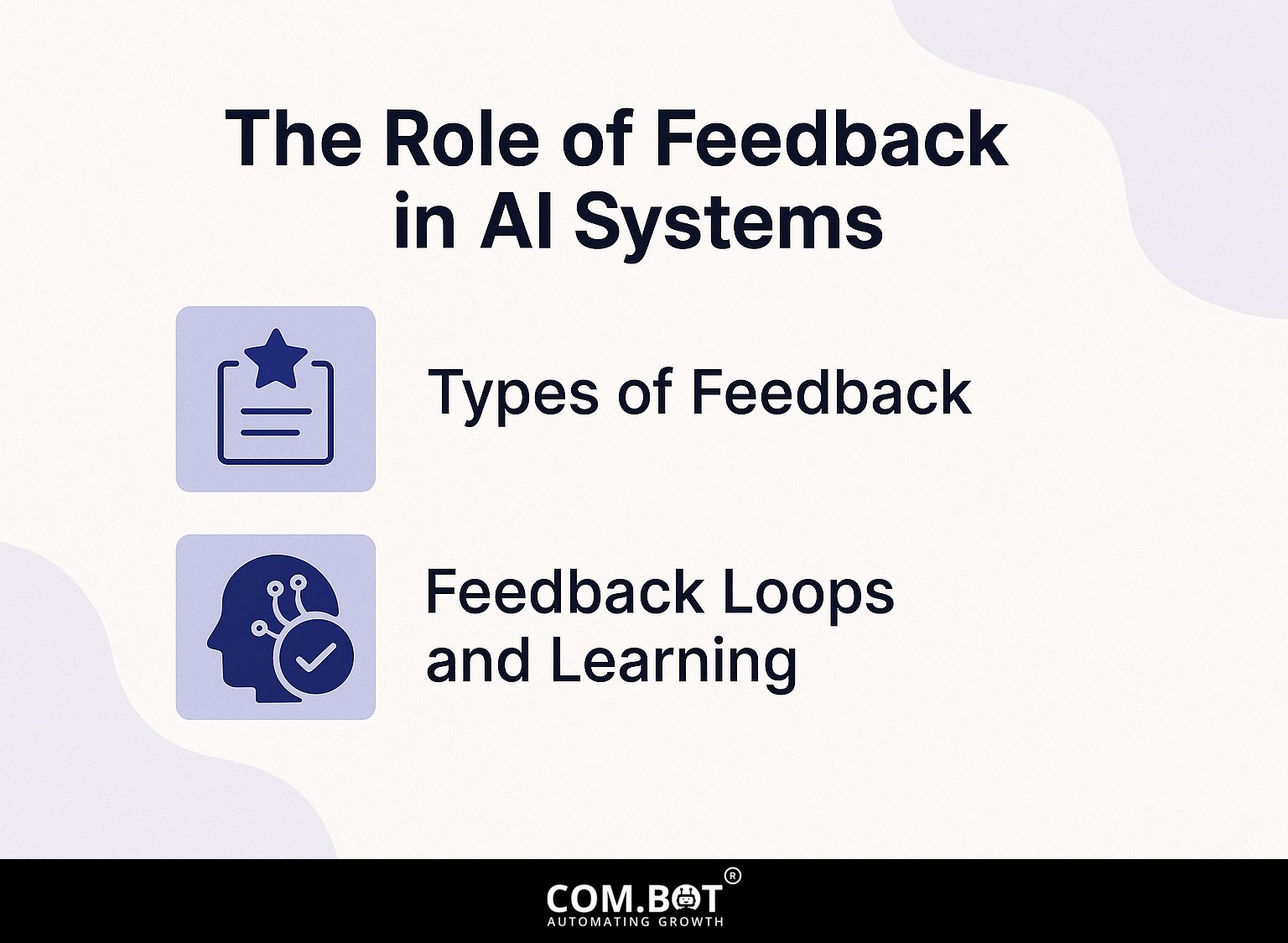
Feedback is important in machine learning. It helps systems learn from how users interact with them and change to meet their needs well.
Types of Feedback
AI systems receive two main types of feedback: human feedback from users and feedback from the system based on how well it performs.
Human feedback is typically gathered through surveys, user testing, or direct input at various stages of the product development process, allowing developers to understand user needs. For instance, using tools like UserTesting can give helpful feedback.
In contrast, automated feedback employs measures such as accuracy rates and usage statistics. Using platforms like Google Analytics helps identify trends over time.
By using both types of feedback, organizations can improve their AI models, ensuring they meet user needs and continue to improve through regular performance reviews. See also: Feedback for AI Systems: Importance and Improvement Techniques.
Feedback Loops and Learning
Feedback loops in AI systems use reinforcement learning methods, encouraging ongoing observation and updates based on user information.
One notable case study is Google’s DeepMind, which applied reinforcement learning to its AlphaGo program. At first, AlphaGo learned by examining games played by people, but later, it got better by playing against itself repeatedly, strengthening its learning process.
By competing in many games against itself, it learned successful tactics and changed how it made choices. AlphaGo beat top Go players, showing how feedback loops improve system performance by updating algorithms with live results and user input. Curious about how feedback mechanisms enhance AI systems? Our analysis explores these improvement techniques in depth.
Importance of User Feedback
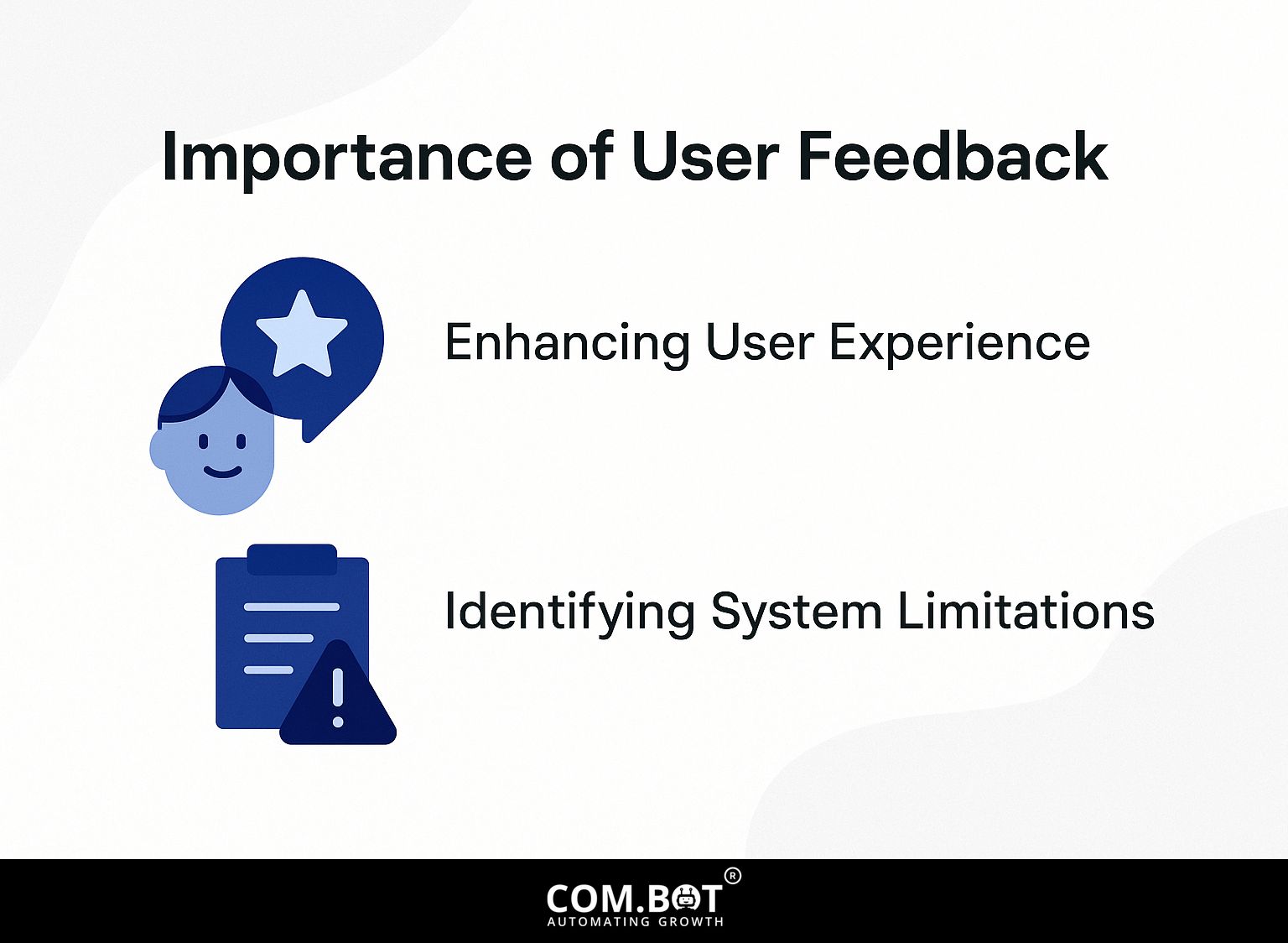
User feedback is essential for improving AI technologies, greatly affecting engagement plans and allowing for effective evaluation.
Enhancing User Experience
Including user feedback in AI systems can improve the user experience. Organizations have seen a 40% increase in user satisfaction after using customized feedback methods.
To gather user feedback effectively, try using tools like SurveyMonkey or Typeform to send out customized surveys. These tools let you make interesting questionnaires for different groups of users.
Another useful way is to use interactive feedback tools like Hotjar. These tools monitor what users do and ask for feedback at important times.
Organizations such as Airbnb have effectively adopted ongoing feedback systems, allowing user comments to directly impact changes to their products.
This kind of responsive design builds user loyalty and improves the system as a whole.
Identifying System Limitations
User feedback is instrumental in identifying system limitations, allowing for timely anomaly detection and continuous quality assessment.
To gather information from users, regularly use surveys and feedback forms after important interactions. For example, tools like Typeform (free-$35/mo) and Google Forms (free) can simplify this process.
Hold customer interviews each month to better understand pain points and usability issues. Analyzing metrics such as user engagement and error reports can highlight areas needing improvement.
By creating a clear method, you can update AI systems smoothly, ensuring they always meet user expectations and stay current with their changing needs.
Feedback Collection Techniques
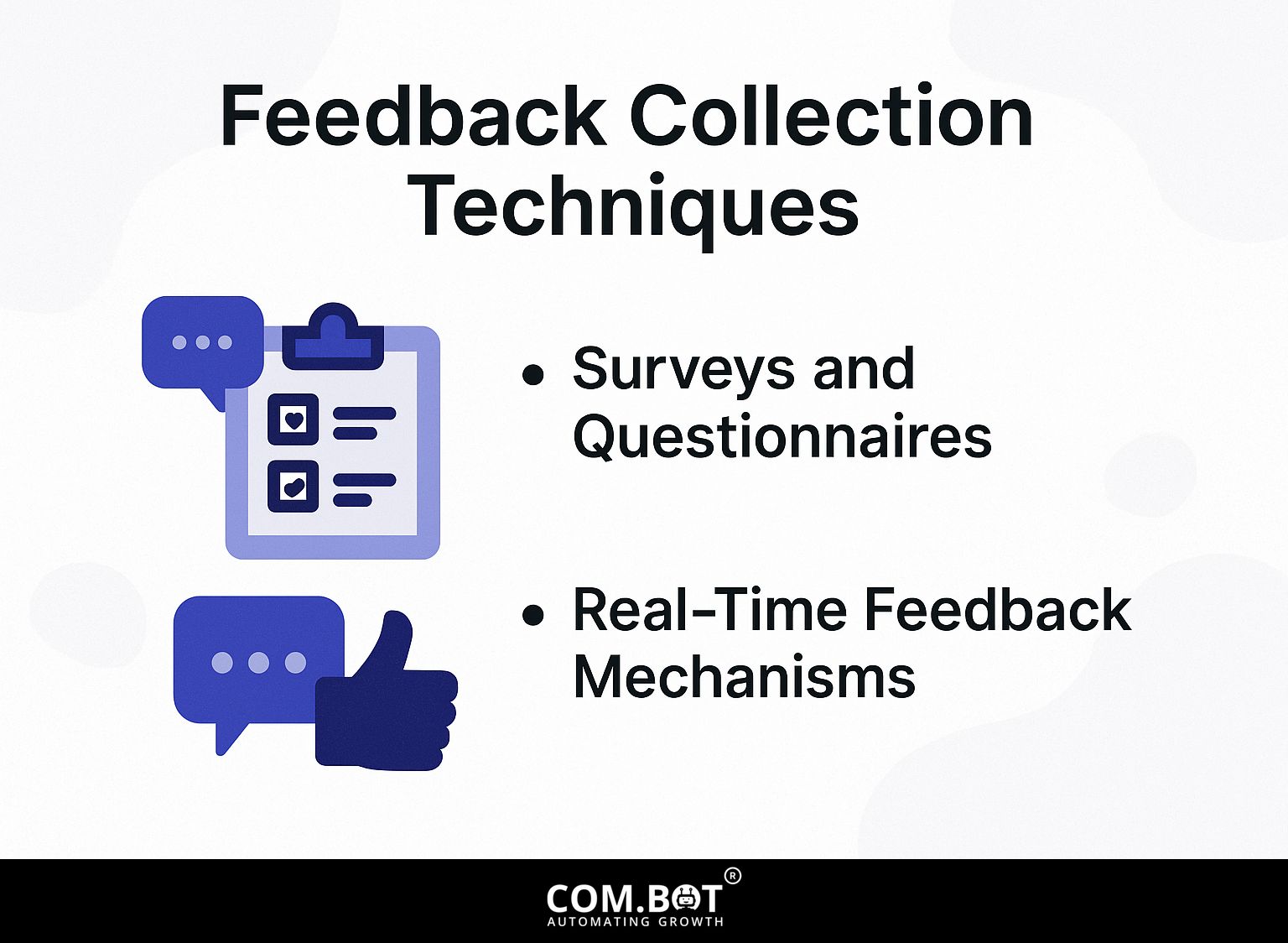
Getting useful feedback is important for improving the accuracy of responses by using effective tools and methods.
Surveys and Questionnaires
Surveys and questionnaires are basic tools for getting feedback from users. Platforms like SurveyMonkey provide useful features for gathering data, with costs ranging from free to $25 per month.
To create effective surveys, start with clear objectives. Use different types of questions:
- multiple choice for numbers,
- open-ended for detailed responses,
- and Likert scales to measure opinions.
For example, SurveyMonkey allows for easy branching logic, ensuring respondents see relevant questions based on their previous answers.
After collecting responses, analyze the data using built-in analytics tools, which can visualize trends and themes.
Share your findings with stakeholders through summary reports to drive actionable changes in your product or service.
Real-Time Feedback Mechanisms
Using tools like chatbots or live polls helps organizations collect feedback from users right away, which improves how well they perform.
For instance, using Typeform for feedback forms can improve user engagement, as its user-friendly design encourages more responses.
Poll Everywhere lets everyone join in during meetings by voting on questions related to the topics discussed. This provides managers with fast feedback on what staff thinks.
Adding a chatbot to your website can answer visitor questions instantly and let you learn about frequent issues.
By using these tools well, organizations can quickly respond to user needs and improve overall satisfaction.
Improvement Techniques for AI Systems
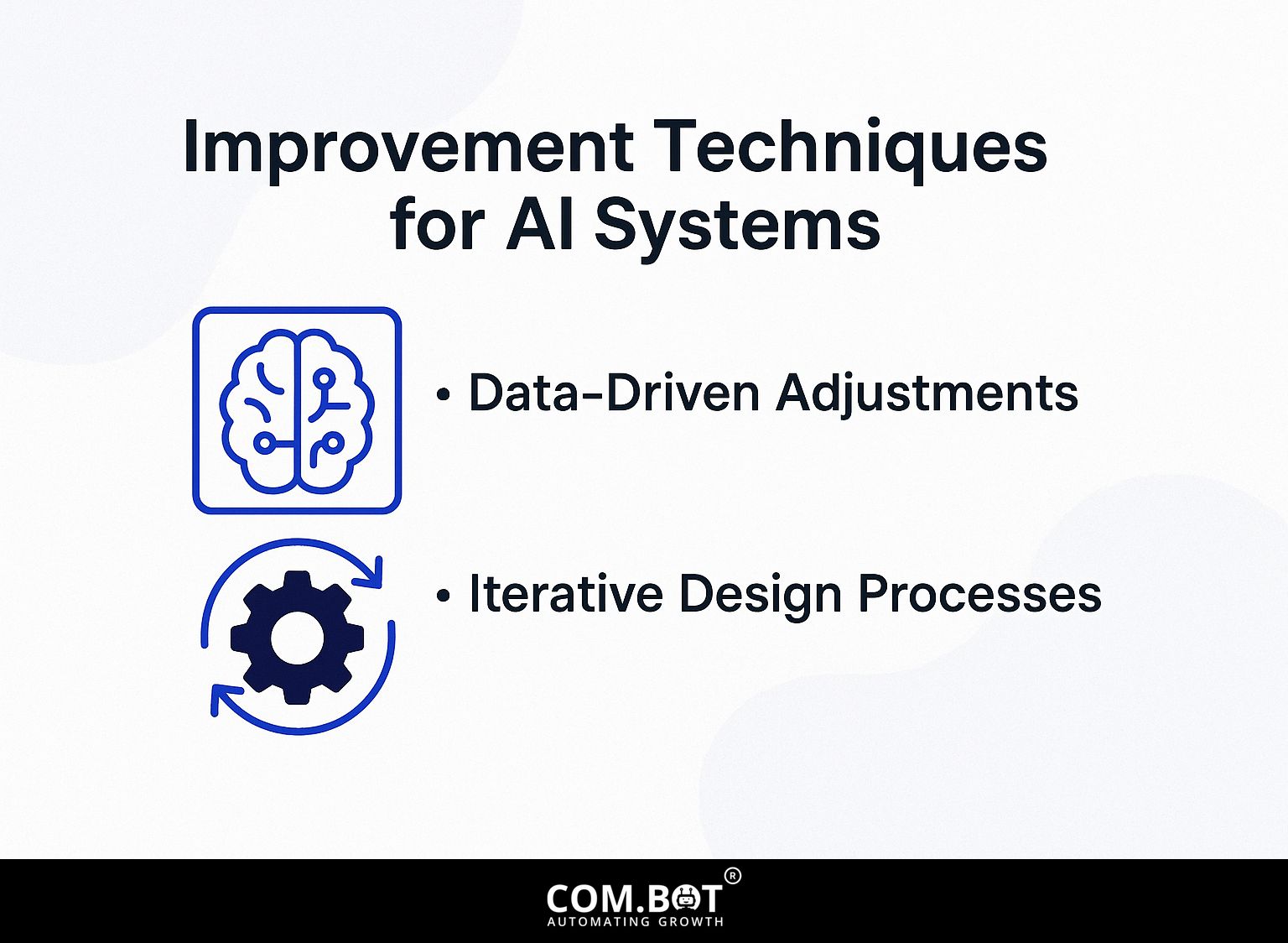
Ways to improve AI systems involve updating them using data and repeated design work, which is essential for changes based on user feedback.
Data-Driven Adjustments
Data-driven adjustments enable AI systems to evolve based on feedback, utilizing tools like Tableau for data visualization and analysis.
To implement these changes effectively, start by defining key performance indicators (KPIs) that align with your system’s objectives, such as accuracy rates, response times, or user engagement metrics.
Use Google Analytics for real-time user interaction data and Python libraries like Pandas for data cleaning and manipulation.
After collecting and examining this data with tools like Tableau, notice patterns and findings. For example, if user activity decreases at certain times, think about changing the AI’s working hours or improving its response methods.
Constantly updating your AI based on this information will improve its performance.
Iterative Design Processes
Design processes that repeat allow ongoing user interactions, with methods like Agile helping to quickly include feedback and improve performance.
Using Agile methods in AI development requires specific practical steps.
- Create teams with people from different roles, like developers, designers, and product owners, to encourage a variety of viewpoints.
- Implement two-week sprints where your team can prototype and test small features, ensuring continuous input from users.
- After each sprint, hold a review meeting to discuss what went well and what did not.
Tools like Jira or Trello can help manage tasks and track feedback effectively, streamlining the continuous improvement cycle.
Case Studies and Examples
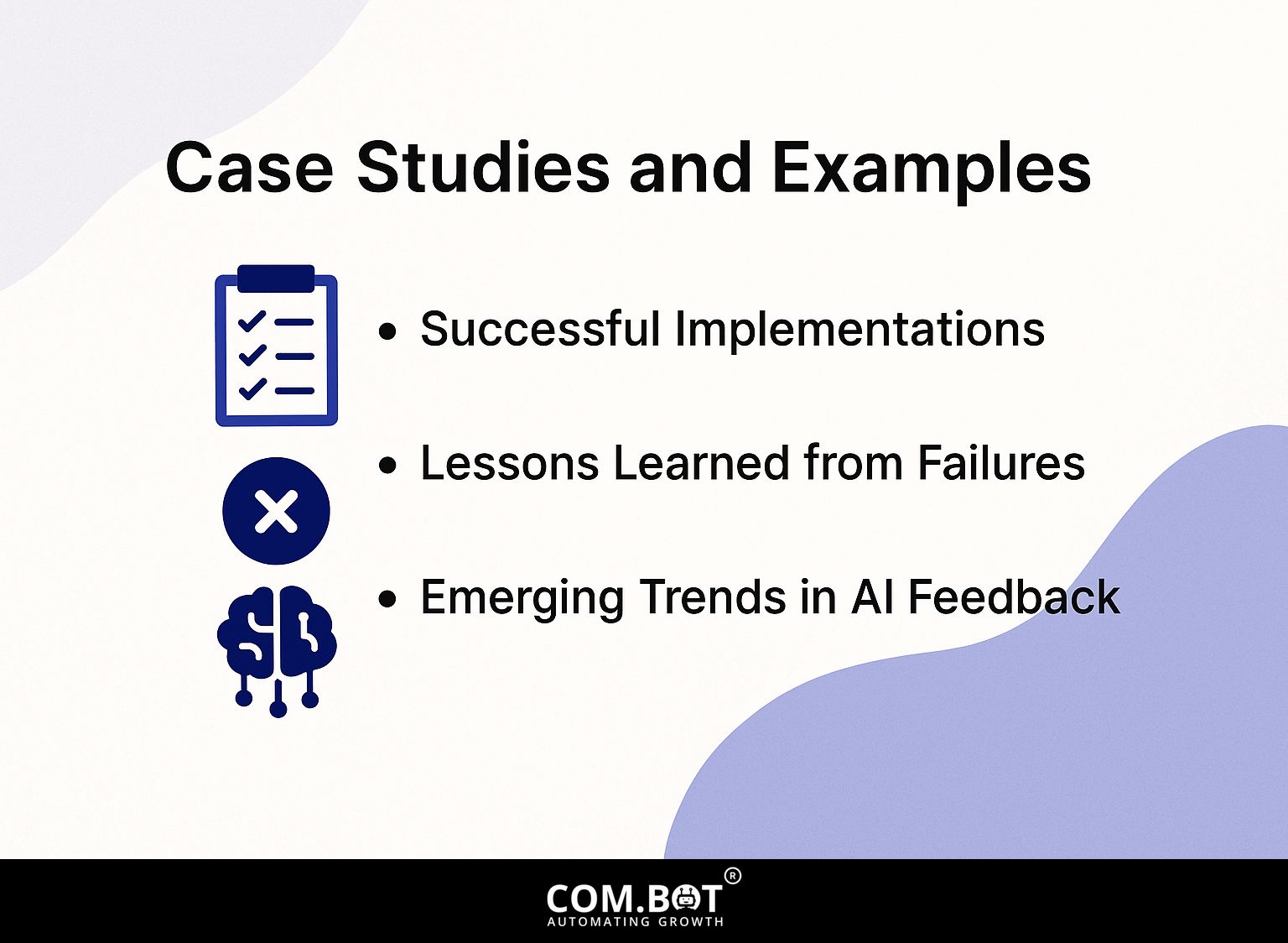
Looking at examples of AI systems shows important lessons from both successful uses and failures in incorporating feedback.
Successful Implementations
Spotify’s use of user feedback to create custom playlists shows strong results, with a 50% rise in user activity.
Another example is Netflix, which looks at what you watch and how you rate shows to recommend content that matches your interests. For instance, by incorporating user feedback on shows, Netflix has observed up to a 28% increase in viewing time.
Adobe uses customer feedback to improve its Creative Cloud products, leading to a 35% increase in user satisfaction scores. These measurements highlight the importance of including users in development because their feedback improves features and the overall experience.
Lessons Learned from Failures
Learning from mistakes in AI feedback systems is important, as shown by Microsoft’s Tay, which was closed because of harmful feedback and operational dangers.
Tay’s responses quickly became inappropriate due to the impact of user input, causing it to use offensive words. This shows the need for strong tracking systems and moral rules in AI development.
To prevent similar issues, organizations should implement a structured feedback loop where human oversight is a fundamental component. Protection mechanisms, such as predefined response filters and supervised learning protocols, can help maintain a safe operational environment.
Checking AI performance often against ethical standards helps systems improve in a good way, building trust and dependability.
Emerging Trends in AI Feedback
Emerging trends in AI feedback highlight the growing role of stakeholder involvement and predictive monitoring, which are expected to shape the next generation of intelligent systems.
As organizations gather more user feedback, companies like Google and Microsoft are setting examples.
Google uses immediate feedback in its AI tools, letting users point out mistakes right away, which helps the system improve faster.
Microsoft uses predictive monitoring in Azure Machine Learning. This helps adjust models based on user patterns ahead of time.
When these practices are widely used, they improve user interactions, resulting in AI systems that respond more quickly and work better, which makes data processing and decision-making faster.
Frequently Asked Questions
What is the importance of feedback for AI systems?
Feedback is important for AI systems because it helps them keep learning and get better at what they do. Without feedback, AI systems can’t adjust to new situations and might make wrong choices.
How does feedback help improve AI systems?
Feedback gives important information to AI systems about how they are doing and helps find areas where they can do better. By studying feedback, AI systems can improve their programs and make better choices later.
What are some effective feedback techniques for AI systems?
Some effective techniques for providing feedback to AI systems include providing clear and specific examples, using a mix of positive and negative feedback, and offering suggestions for improvement. It is also important to provide feedback in a timely and consistent manner.
Why is it important to continuously gather feedback for AI systems?
Continuous feedback helps AI systems adjust to changes and get better at their tasks immediately. By regularly gathering feedback, AI systems can stay updated and make accurate decisions in constantly shifting environments.
How can AI systems use feedback to avoid bias and improve diversity?
By analyzing feedback from a diverse group of sources, AI systems can identify and address any biases in their algorithms. This helps to make decision-making fair and includes a variety of data for training AI systems.
What are the benefits of collecting feedback for AI systems from end users?
Collecting feedback from the people who use AI systems helps us learn about their needs and what they like. This information can be used to make AI systems work better and be easier for users to interact with.
